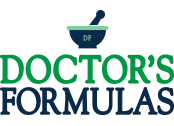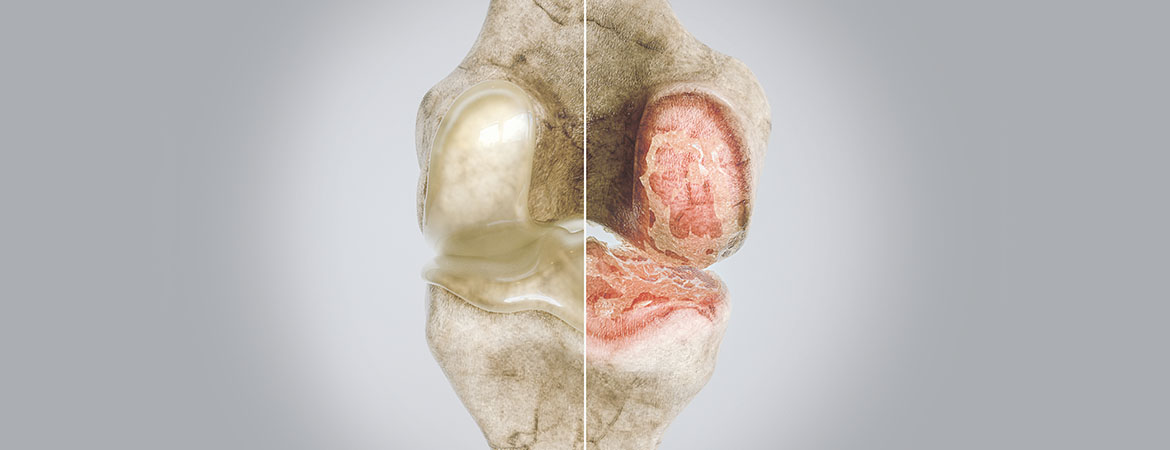Curcumin & Knee Osteoarthritis
The efficacy of high- and low-dose curcumin in knee osteoarthritis:
A systematic review and meta-analysis
The aim of this study was to critically appraise and evaluate the effects of low- and high-dose curcuminoids on pain and functional improvement in patients with knee osteoarthritis (OA) and to compare adverse events (AEs) between curcuminoids and non-steroid anti-inflammatory drugs (NSAIDs).
We systematically reviewed all randomized controlled trials (RCTs) on curcuminoids in knee osteoarthritis from PubMed, Embase, Cochrane Library, AMED, Cinahl, ISI Web of Science, Chinese medical database, and Indian Scientific databases from inception to June 21, 2021.
We included eleven studies with a total of 1258 participants with primary knee OA. The meta-analysis results showed that curcuminoids were significantly more effective than comparators regarding visual analog scale (VAS) and Western Ontario and McMaster Universities Arthritis Index (WOMAC) pain scores. However, no significant difference in pain relief or AEs between the high-dose (daily dose ≥1000 mg or total dose ≥42 gm) and low-dose (daily dose <1000 mg or total dose <42 gm) curcuminoid treatments was observed. When comparing curcuminoids versus NSAIDs, a significant difference in VAS pain was found. For AE analysis, three of our included studies used NSAIDs as comparators, with all reporting higher AE rates in the NSAID group, though significance was reached in only one study.
The results of our meta-analysis suggest that low- and high-dose curcuminoids have similar pain relief effects and AEs in knee OA. Curcuminoids are also associated with better pain relief than NSAIDs; therefore, using curcuminoids as an adjunctive treatment in knee OA is recommended.
Highlights
- Eleven randomized controlled trials with a total of 1258 participants with primary knee OA were reviewed and meta-analyzed.
- Low- and high-dose curcuminoids have similar pain relief effects and adverse events in knee OA.
- Curcuminoids are associated with better pain relief than non-steroid anti-inflammatory drugs.
Osteoarthritis (OA) is a common degenerative disease that results in pain, disability, and poor quality of life. OA affects approximately 240 million people worldwide, approximately 10% of men and 18% of women. Although the prevalence of knee OA is high worldwide, the cause of OA remains uncertain, and there is no curative treatment for its fundamental causes. Current treatments for knee OA include pharmacological treatment, physiotherapy, bracing, prolotherapy, and even surgery, depending on the severity. The first-line medication for OA is non-steroid anti-inflammatory drugs (NSAIDs) however, elderly individuals with comorbidities may experience some adverse events (AEs) associated with these drugs. Therefore, researchers have been studying the effects of antioxidant supplements, such as curcuminoids, on knee OA.
Curcuminoids, especially curcumin, the extract of Jiang Huang (Rhizoma Curcumae Longae, English name turmeric), are derived from Chinese herbs and commonly used as food flavoring and coloring. The major components of turmeric roots are volatile oils and curcuminoids; the latter includes diferuloylmethane (82 %), demethoxycurcumin (15 %), and bisdemethoxycurcumin (3%)”, three major components in commercial curcumin. Curcuminoids have been shown to possess multiple pharmacological effects, such as anti-inflammatory, anti-oxidative, anti-hyperlipidaemic, and anti-platelet effects, and also to relieve pain and reduce swelling. These properties can be attributed to curcumin acting as an inhibitor of the nuclear factor-kappa β (NF-κβ) pathway and a scavenger of reactive oxygen and nitrogen species. Curcuminoids are employed as an adjunctive treatment for rheumatoid arthritis, degenerative neural disease, some cancers, and polycystic ovary disease. In general, curcumin’s side effects are not as severe as those of NSAIDs; although some people might experience nausea or diarrhea after ingesting curcumin, these side effects are self-limited and not dose-dependent.
Recent randomized controlled trials (RCTs) have revealed that curcumin has similar effects on pain relief and fewer gastrointestinal AEs than NSAIDs, such as diclofenac and ibuprofen. Moreover, Ali Mobasheri et al. reported that “curcumin synergistically potentiates the growth-inhibitory and pro-apoptotic effects of the NSAID in OA-derived synovial adherent cells”, suggesting that combination treatment with curcumin and an NSAID may lower the NSAID dosage needed and reduce its side effects. Additionally, a recent study by Shep et al. reported less rescue medication use and fewer AEs in patients taking combined curcuminoid and diclofenac than in those taking diclofenac alone.
Previous meta-analyses have shown that curcuminoids have beneficial effects on knee OA. However, to the best of our knowledge, no systematic review or meta-analysis has investigated curcuminoids about the daily or total dose on the effects of knee OA. Therefore, the aim of this study was to critically appraise and evaluate the effects of low and high doses of curcuminoids on pain and functional improvements in patients with knee OA and to compare AEs between curcuminoids and NSAIDs.
Based on the results of our meta-analysis, curcuminoids were significantly more effective than comparators with regard to pain relief in patients with knee OA. After Hartung-Knapp adjustment, we found very low to low certainty evidence for the effects of curcuminoids on VAS pain, the WOMAC total score, and physical and stiffness scores, although these effects were significant in the random-effects models before adapting Hartung-Knapp correction. In contrast, the result for the WOMAC pain was still significantly favored curcuminoids even after the Hartung-Knapp adjustment. Moreover, while comparing curcuminoids against NSAIDs, the results of the VAS pain score still showed that curcuminoids were more effective in pain relief than NSAIDs even after adjustment, which demonstrates the robustness of these results. Our analyses also revealed no significant difference between high and low curcuminoid doses in terms of pain relief and AEs. In AE analysis, three of the included studies used NSAIDs as comparators. All reported higher AEs in the NSAID group than in the curcuminoid group, but only one reached statistical significance.
Several previous meta-analyses have addressed the effectiveness of curcumin in arthritis, such as OA and rheumatoid arthritis. Their results revealed that curcumin is effective at reducing pain and inflammation-related symptoms in patients with OA, especially knee OA. For example, the study by Bannuru et al. in 2018 compared Curcuminoid and Boswellia formulations with both placebo and NSAIDs in knee OA patients, and the results showed significant improvement in pain and function and fewer gastrointestinal AEs with curcuminoids compared with NSAIDs.27 In the most recent meta-analysis by Wang et al. (2021), patients with a lower BMI and younger age had a better response to curcuminoids, and larger effects of both pain and physical function were noted in RCTs conducted in Asia than in other countries. Our results are not only concordant with previous meta-analyses but also showed that there was no significant difference in VAS pain reduction between high-dose (daily dose ≥1000 mg or total dose ≥42 gm) and low-dose (daily dose <1000 mg or total dose <42 gm) groups.
Using the GRADE approach, we evaluated the study quality and rated the AEs as having a moderate certainty of evidence because three included studies had performance bias, such as incomplete blinding from the study investigator or assistants or not mentioning blinding to the practitioners. We downgraded the WOMAC and its subscales to having a low certainty of evidence due to the incomplete outcome data and statistically significant heterogeneity with low p values and high I-squared values. Heterogeneity may be caused by differences in treatment duration, follow-up time, total doses, control groups, and geographical differences. In addition, manufacturer sponsorship was also noted in five studies; for example, Madhu et al. investigated the product NR-INF-02, an extract from the rhizome of Curcuma longa, and Linn and Haroyan et al. used CuraMed which was provided by sponsors. Furthermore, publication bias was suspected in the VAS pain score results since Egger’s test was statistically significant (p = 0.024) with asymmetry in the funnel plot. Therefore, we further downgraded the VAS pain score to having a very low certainty of evidence.
In addition to VAS and WOMAC scales, the included RCT by Wang et al. also evaluated effusion-synovitis and cartilage composition of knee joints by magnetic resonance imaging (MRI). However, the results showed no improvement in MRI findings after curcumin usage, and some other studies found no significant change in biomarkers related to inflammation. Apart from the anti-inflammatory and anti-oxidative effects of curcumin, Ean-Jeong Seo et al. reported that curcuminoid acted as a nociceptin receptor antagonist that downregulated opioid-related nociceptin receptor 1 gene (OPRL1) expression by 5.9-fold. As nociceptin increases pain sensation in supraspinal pain transduction pathways, downregulating OPRL1 decreases production of the nociception receptor, leading to pain relief. On the other hand, the pain relief effects of NSAIDs can be attributed to inhibition of the cyclooxygenase (COX) enzyme. There are two COX isoforms, COX-1 and COX-2, and NSAID AEs are mainly caused by inhibition of COX-1; thus, selective COX-2 inhibitors have fewer AEs than non-selective COX inhibitors. NF-κβ is a transcriptional regulator promoting COX-2 expression and curcuminoids inhibit the NF-κβ pathway and further decrease COX-2 synthesis. We believe this is the reason why curcuminoids have fewer AEs than non-selective NSAIDs. Regarding the safety of curcuminoids versus NSAIDs, further RCTs comparing curcuminoids with selective COX-2 inhibitors are warranted.
In the past, curcumin has been criticized because of its low bioavailability and short half-life in clinical use, as its hydrophobic nature results in poor blood absorption. Curcuminoids also have the characteristics of rapid metabolism and systemic elimination. Nevertheless, once in the bloodstream, curcumin is stable and can even enter the brain. Previous studies have shown that its bioavailability can be enhanced by combining it with phosphatidylcholine complexes or producing nanoparticle formulations. Therefore, it is expected that lower doses of these complexes might be as effective as higher doses of standard turmeric powder because the pharmacokinetics and hepatoprotective activities are increased. Other methods to improve curcumin bioavailability include adding naturally occurring volatile oils from turmeric roots or piperine, using heat to enhance solubility, inhibiting its glucuronidation, and using liposomal technology to enhance absorption and reduce systemic elimination. Further studies are needed to compare effects among different formulation types and bio-enhancers.
Our meta-analysis has strengths because it is the first to analyze the dose effects of curcumin on knee OA. We searched for the newest studies until June 21, 2021, and reported the results according to the PRISMA checklist.
Nonetheless, we recognized some limitations in our study. First, we might not have included all relevant RCTs, especially those unpublished or not published in English or Chinese. Hence, we could not assess publication bias objectively. Second, the number of included RCTs was small; indeed, only 11 studies from inception to June 21, 2021were included. Therefore, we performed Hartung-Knapp adjustments. Third, significant publication bias for the VAS pain score was observed in our meta-analysis, which might be due to the high variation in intervention intensity. Fourth, a protocol was not pre-registered for this review, which was not in alignment with the Cochrane guidance. Finally, we only analyzed curcuminoids in knee OA, and the effects of curcuminoids for OA in other joints, such as the hip or hand, are not clear.
The results of our meta-analysis suggest that curcuminoids are effective in pain relief in knee OA and that low- and high-dose curcuminoids have similar effects in improving pain and AEs. Curcuminoids are also more effective in achieving pain relief than NSAIDs; therefore, using curcuminoids as an adjunctive treatment in knee OA is recommended. However, current evidence is heterogeneous and mostly refers to short-term use. Thus, further high-quality RCTs of different curcuminoid doses with longer follow-up durations are needed.
Story Source:
Complementary Therapies in Medicine - September 2021 https://doi.org/10.1016/j.ctim.2021.102775

